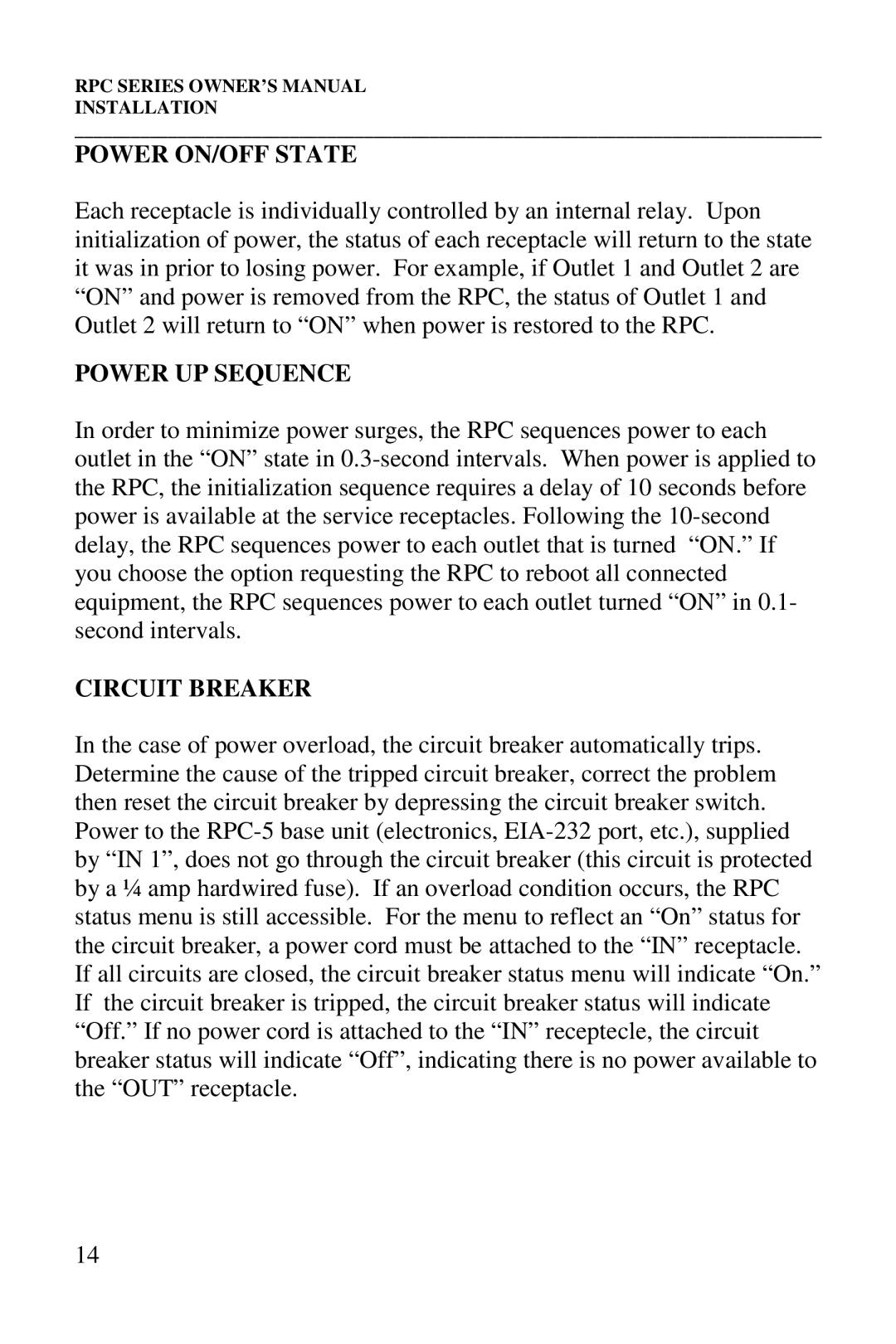RPC SERIES OWNER’S MANUAL INSTALLATION
________________________________________________________________________________
POWER ON/OFF STATE
Each receptacle is individually controlled by an internal relay. Upon initialization of power, the status of each receptacle will return to the state it was in prior to losing power. For example, if Outlet 1 and Outlet 2 are “ON” and power is removed from the RPC, the status of Outlet 1 and Outlet 2 will return to “ON” when power is restored to the RPC.
POWER UP SEQUENCE
In order to minimize power surges, the RPC sequences power to each outlet in the “ON” state in 0.3-second intervals. When power is applied to the RPC, the initialization sequence requires a delay of 10 seconds before power is available at the service receptacles. Following the 10-second delay, the RPC sequences power to each outlet that is turned “ON.” If you choose the option requesting the RPC to reboot all connected equipment, the RPC sequences power to each outlet turned “ON” in 0.1- second intervals.
CIRCUIT BREAKER
In the case of power overload, the circuit breaker automatically trips. Determine the cause of the tripped circuit breaker, correct the problem then reset the circuit breaker by depressing the circuit breaker switch. Power to the RPC-5 base unit (electronics, EIA-232 port, etc.), supplied by “IN 1”, does not go through the circuit breaker (this circuit is protected by a ¼ amp hardwired fuse). If an overload condition occurs, the RPC status menu is still accessible. For the menu to reflect an “On” status for the circuit breaker, a power cord must be attached to the “IN” receptacle. If all circuits are closed, the circuit breaker status menu will indicate “On.” If the circuit breaker is tripped, the circuit breaker status will indicate “Off.” If no power cord is attached to the “IN” receptecle, the circuit breaker status will indicate “Off”, indicating there is no power available to the “OUT” receptacle.
